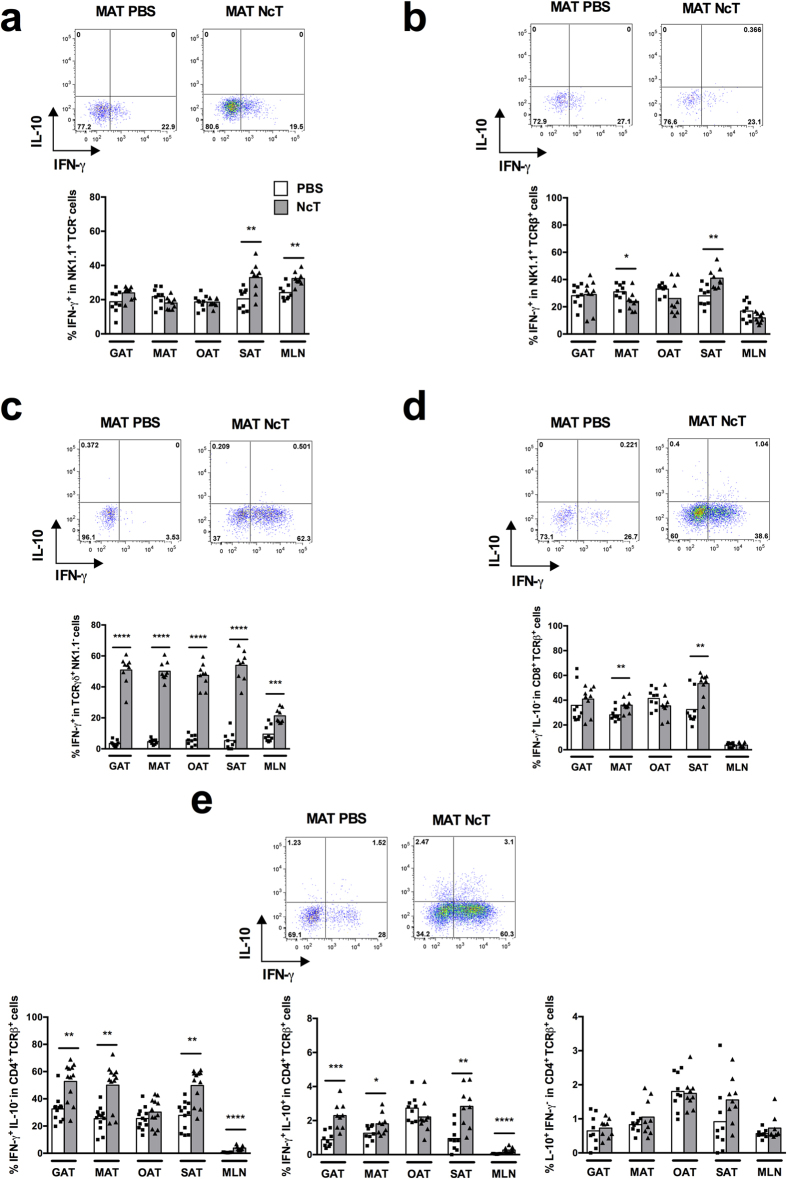Figure 5.
Sharp increase in the frequency of TCRγδ+ IFN-γ+ cells in the adipose tissue of N. caninum infected mice. Frequencies of (a) IFN-γ+ NK1.1+ TCRβ−TCRγδ− cells on total NK1.1+ cells, (b) IFN-γ+ NK1.1+ TCRβ+ TCRγδ− cells on total NK1.1+ TCRβ+ cells, (c) IFN-γ+ TCRγδ+ NK1.1− cells on total TCRγδ+ cells, (d) IFN-γ+ CD8+ TCRβ+ TCRγδ−NK1.1− cells on total CD8+ T cells and (e) IFN-γ+ IL-10−CD4+ TCRβ+ TCRγδ−NK1.1−, IFN-γ+ IL-10+ CD4+ TCRβ+ TCRγδ−NK1.1− and IL-10+ IFN-γ−CD4+ TCRβ+ TCRγδ−NK1.1− cells on total CD4+ T cells in the gonadal, mesenteric, omental and subcutaneous adipose tissue (GAT, MAT, OAT and SAT, respectively) and mesenteric lymph nodes (MLN) observed 7 days after intraperitoneal challenge with 1 × 107 N. caninum tachyzoites (NcT) or PBS, as indicated. Each symbol represents an individual mouse. Bars represent means of 9 mice per group pooled from 3 independent experiments. (Mann-Whitney U, *P < 0.05; **P ≤ 0.01; ***P ≤ 0.001; ****P ≤ 0.0001). Representative example of gating strategy used to define the respective cellular populations in the different depots of adipose tissue analysed. The example shown corresponds to MAT.

